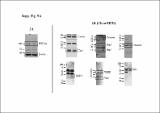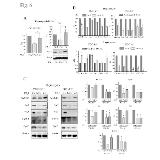Por favor, use este identificador para citar o enlazar a este item:
http://hdl.handle.net/10261/152281COMPARTIR / EXPORTAR:
 SHARE SHARE
 CORE
BASE CORE
BASE
|
|
| Visualizar otros formatos: MARC | Dublin Core | RDF | ORE | MODS | METS | DIDL | DATACITE | |

| Título: | PGC-1α downregulation in the steatotic liver enhances ischemia-reperfusion injury and impairs ischemic preconditioning |
Autor: | Sánchez-Ramos, Cristina CSIC ORCID; Prieto, Ignacio CSIC ORCID; Tierrez, Albert; Laso, Javier; Valdecantos, M. P. CSIC ORCID; Bartrons, Ramón; Roselló-Catafau, Joan CSIC ORCID; Monsalve, María CSIC ORCID | Palabras clave: | Reactive oxygen species Antioxidants Oxidative stress Oxidative metabolism Mitochondria |
Fecha de publicación: | 2017 | Editor: | Mary Ann Liebert | Citación: | Antioxidants and Redox Signaling (2017) | Resumen: | [Aims]: Liver steatosis is associated with mitochondrial dysfunction and elevated reactive oxygen species (ROS) levels together with enhanced sensitivity to ischemia-reperfusion (IR) injury and limited response to preconditioning protocols. Here, we sought to determine whether the downregulation in the steatotic liver of peroxisome proliferator-activated receptor γ co-activator 1α (PGC-1α), a master regulator of mitochondrial metabolism and ROS that is known to play a role in liver metabolic control, could be responsible for the sensitivity of the steatotic liver to ischemic damage. [Results]: PGC-1α was induced in normal liver after exposure to an IR protocol, which was concomitant with an increase in the levels of antioxidant proteins. By contrast, its induction was severely blunted in the steatotic liver, resulting in a modest induction of antioxidant proteins. Livers of PGC-1α-/- mice on a chow diet were normal, but they exhibited an enhanced sensitivity to IR injury and also a lack of response to ischemic preconditioning (IPC), a phenotype that recapitulated the features of the steatotic liver in terms of liver damage, although the inflammatory response differed between both models. Utilizing an in vitro model of IPC, we found that PGC-1α expression was downregulated in hepatic cells cultured at 1% O2; whereas it was induced after reoxygenation (3% O2), and it was responsible for the recovery of antioxidant gene expression after the ischemic period. [Innovation & Conclusion]: PGC-1α plays an important role in the protection against IR injury in the liver, which is likely associated with its capacity to induce antioxidant gene expression. | Versión del editor: | https://doi.org/10.1089/ars.2016.6836 | URI: | http://hdl.handle.net/10261/152281 | DOI: | 10.1089/ars.2016.6836 | Identificadores: | doi: 10.1089/ars.2016.6836 issn: 1523-0864 e-issn: 1557-7716 |
| Aparece en las colecciones: | (IIBB) Artículos (IIBM) Artículos |
Ficheros en este ítem:
| Fichero | Descripción | Tamaño | Formato | |
|---|---|---|---|---|
| pgcalfa.pdf | 338,9 kB | Adobe PDF |  Visualizar/Abrir | |
| 11SuppInfoFiguLegend.pdf | 97,08 kB | Adobe PDF |  Visualizar/Abrir | |
| Fig3PGC.pdf | 711,22 kB | Adobe PDF |  Visualizar/Abrir | |
| SuppFigr1-8.pdf | 2,48 MB | Adobe PDF |  Visualizar/Abrir | |
| Supp Fig 9-11.pdf | 2,69 MB | Adobe PDF |  Visualizar/Abrir | |
| Fig1PGC.tif | 3,71 MB | TIFF |  Visualizar/Abrir | |
| Fig2PGC.tiff | 1,21 MB | TIFF |  Visualizar/Abrir | |
| Fig4PGC.tiff | 3,83 MB | TIFF |  Visualizar/Abrir | |
| Fig5PGC.tif | 5,31 MB | TIFF |  Visualizar/Abrir | |
| Fig6PGC.tiff | 1,24 MB | TIFF |  Visualizar/Abrir |
CORE Recommender
SCOPUSTM
Citations
22
checked on 18-abr-2024
WEB OF SCIENCETM
Citations
19
checked on 27-feb-2024
Page view(s)
345
checked on 24-abr-2024
Download(s)
660
checked on 24-abr-2024
Google ScholarTM
Check
Altmetric
Altmetric
NOTA: Los ítems de Digital.CSIC están protegidos por copyright, con todos los derechos reservados, a menos que se indique lo contrario.
